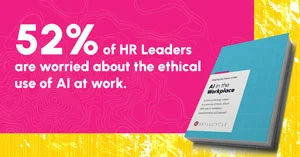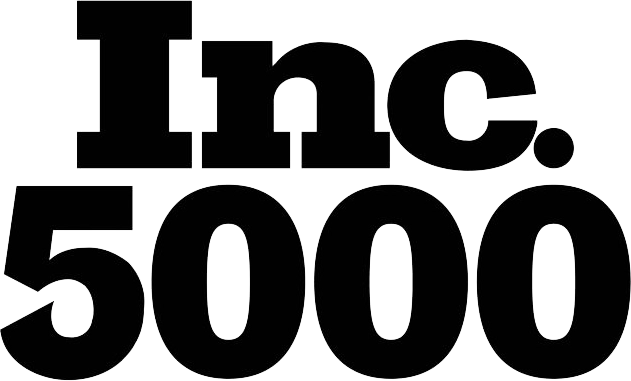If your vision for your company includes healthy revenue growth, profitability, and expanding market share, it’s time to consider how much you’re investing in your people. With a proactive learning and development plan for your workforce, you could gain improved performance and keep your people from becoming disengaged — or leaving altogether.
“People are happier in their roles and have a stronger connection to their companies when they feel there are opportunities for growth,” says Max Bayram, VP of Marketing of SkillCycle.
Increased engagement could be the key that fits the fiddly lock to your company’s success and opens up better performance across the board. Employee engagement positively impacts nearly a dozen business outcomes, including profitability, productivity, earnings per share, and turnover, according to Gallup.
With an understanding of how learning and development contribute to employee engagement, the return on investment in employee learning becomes clear.
In this article about connecting learning to performance, we’ll explore:
- How learning and performance are intertwined
- Benefits of a proactive learning and development plan
- What organizations often get wrong about performance management
- Why a learning and development plan must come first
How learning and performance are connected
When employees are inspired to grow and develop with their companies, you will see measurable improvements in employee performance as they dig into the challenge of learning new skills. As your team members develop new skills, they can work toward internal promotions and expand their capacity to drive positive results throughout the organization.
Learning must be deeply integrated with strategy and core processes such as performance management, but many companies know they aren’t hitting the mark, according to McKinsey.
“In many companies, learning is in one silo, and performance management is in another,” says Bayram. “But for best results, they need to be connected.”
When employee development goals are aligned with a company’s strategic goals, every new skill gained or improved contributes to the organization’s success. This alignment helps ensure that learning initiatives consistently drive improvements in both employee and company performance.
“When we learn about employee goals, we can help move past the typical human response of fearing change to inspiring real change from within,” says Bayram.
Building a strong learning culture can give companies a strategic advantage, making improvement a common cause between employees and learners, according to Harvard Business Review.
Benefits of a proactive learning and development plan
The entire organization benefits when a strong commitment is made to learning and development, impacting employees, performance, and even HR teams.
These advantages include:
A better working environment for employees
Employees who see their career pathway taking shape within the company will likely be more satisfied with their jobs and less inclined to leave. If you’ve been wondering how to improve employee experiences in your organization, partnering with your people to help them achieve their goals goes a long way.
People value the chance to improve and gain new skills to prepare for the future, and will look for these opportunities when evaluating new job roles.
Increased company performance
Understanding how learning and development contribute to employee engagement and the significant impact this engagement has on your company’s success is vital.
Once that connection is clear, it’s natural to view learning as a valuable benefit that drives business performance. Creating learning and development plans is integral to ensuring a strong future for your company.
Valuable data insights for HR teams
HR teams need better ways to share how learning benefits companies. With a system that supports employee learning, they can pull data to show how different initiatives relate to company profitability and share the success of specific learning initiatives.
For example, they can show examples of employees learning new skills that increased their productivity and helped them earn a promotion. Then they can demonstrate the money saved by not needing to recruit externally for the new role.
“If you can put a person in the right position by giving them learning ahead of performance management, you’ll find that people are more engaged and more connected to company goals because their personal goals are aligned,” says Bayram.
What organizations often get wrong about performance management
Performance management is often a missed opportunity to help employees understand how to improve and offer concrete suggestions to do so. Improvement typically comes from gaining and practicing new skills over time and is even more likely when people work toward a goal. Yet, performance management in most companies focuses more on measurement.
When it comes time to review performance, the conversation tends to focus on things that didn’t go well since the last review. This rear-view mirror approach doesn’t give employees a path forward and doesn’t align with what we know about how to improve employee experience.
“We believe feedback should be actionable for the employee,” says Bayram. “Otherwise, it can create anxiety, which shuts down engagement. This is why keeping performance management separate from learning hasn’t worked for most.”
Feedback conversations and employee check-ins should be more frequent to keep team members engaged and invested in their development. Ideally, these discussions include goals, skill-building opportunities, and practical suggestions for improving performance.
Why a learning and development plan must come first
Prioritizing learning over simply managing performance can help shift the focus from what’s happened in the past to what the employee can accomplish today and in the future. When learning is integrated from the beginning, employees are given opportunities to learn new skills, practice them, receive feedback on how to improve, and try again.
Successfully implementing a learning and development plan will involve a combination of tools, resources, and a culture supporting learning. Having the right learning and development tools matters, but only if your people are willing to use them.
“A critical metric is usage,” says Bayram. “The one thing consistent in driving usage across every company is the value of CEO support for learning and development systems.”
When the CEO actively engages in learning and development — using the system and championing it throughout the company — it helps generate more employee interest and engagement, driving up usage.
The takeaway? Learning and development tools are helpful, but integrating learning into your company culture so it’s easy for your employees to embrace tools and resources is imperative.
Book a demo for more insights into how learning and development can help drive performance.








